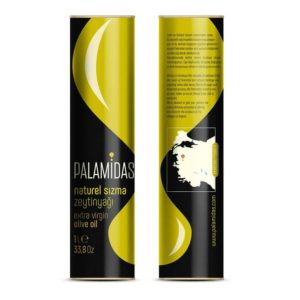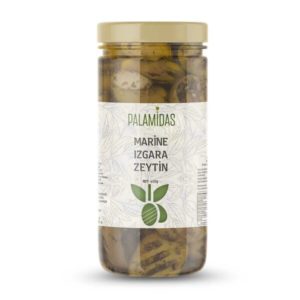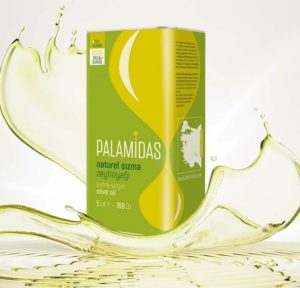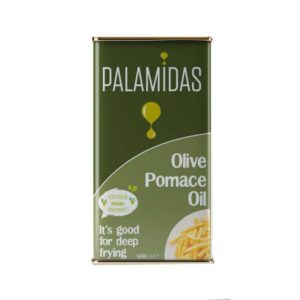FAQ
Concerning General Information
Extra virgin (EV) olive oil is the oil extracted from fresh olives using a mechanical process without the use of excessive heat or any form of additives or solvents. Provided that the olives are free from disease and they are processed into oil without delay using a clean mill they should produce an olive oil that has an aroma and flavour that is free of taste defects and as such is of extra virgin grade. It should be noted that EV oils can be legitimately made without using a press. In fact, most EV olive oils made in commercial relevant quantities are not made by pressing but instead by centrifugation of the paste made by crushing olives. What pressing and centrifugation have in common is that they are both mechanical processes and neither involves the use of any chemical agents. The heat bit is more of a technical issue. You can extract more oil out of olive paste if you heat it up. However, the quality of the oil will suffer as a result. The application of some heat is necessary in order to extract commercially viable amounts of oil with good aroma and flavour. 28-30 degrees Celsius is the ideal with 32 degrees Celsius being the upper end of the temperature range used by most producers interested in quality. The process of making olive oil includes first crushing of the olive and then pressing to produce the oil. The “Extra” in EVOO represents the absolute highest grade for olive oil. Olive oils can be characterized based on their acidity. “Extra” virgin olive oil has less than 0.8% free fatty acids (FFA) as compared to “Virgin” olive oil which can contain as much as 2%. Extra Virgin Olive Oil is the most refined in flavor and contains the highest amount of antioxidants.
Pomace olive oil is the cheapest grade of olive oil available on the market and is the only olive oil that is extracted using solvents. The production of extra virgin olive oil results in the production of a waste material called pomace which consists of the mashed up skins, seeds and pulp of the olive minus most of the water and oil which has been removed. Due to extraction inefficiencies, the pomace contains small, albeit commercially viable amounts of olive oil. The pomace is dried by heating and the remnant oil is dissolved by using the solvent hexane. The solvent is boiled off (and re-used) to leave a crude oil called pomace oil. This oil is then refined using the same process used to produce pure and light oils. The result? A bland characterless olive oil that is low in antioxidants. The positives? Pomace is notoriously difficult to compost down so pomace heaps have the potential to contaminate surface and ground water. So processing pomace can have some environmental advantages. The negatives? The initial heating process has the potential to produce carcinogenic substances called PAH‟s which are not completely removed by refining
Not quality, but it can tell you other things. The colour of an olive oil is related to the amount of chlorophyll it contains. Olives are picked early in the season tend to make green coloured oil as they contain higher levels of chlorophyll. Olives harvested late in the season will typically produce more golden coloured oils due to a higher level of natural occurring levels of carotene like substances. Both oils may be technically equivalent in quality but very different in style. There are also many examples of green coloured oils that taste remarkably ripe, and golden oils that have strong grassy herbal characters. To make matters more complex, many strongly green coloured oils will turn a more golden colour when stored. So do not place too much emphasis on colour. Incidentally if you purchase a very green looking oil make sure that it is stored in a dark bottle in a dark place. The stuff that makes it green (chlorophyll) helps start the reaction that makes oils rancid, but only in the presence of light. experience. Finally you can also choose to pay by bank transfer as well as by cash at the door.
The cloudiness arises from small particles of olive that remain after processing. These particles do not convey any additional health benefits or flavour. Cloudy olive oils generally have shorter shelf lives and if the cloudiness settles into the base of the bottle, the resultant sediment can cause off characters to be formed. Incidentally, most clear oils get that way not by being filtered but simply by allowing the oil to settle naturally in tank under the force of gravity. The clear oil is removed from the sediment at the bottom of the tank and is bottled.
Firstly, olive oils are typified by their high level of monounsaturated fats compared with nearly all other edible oils. Monounsaturates are preferred by the health conscious. Oils high in monounsaturates are also more resistant to oxidation and as such have a longer shelf lives. Incidentally, the major monounsaturated fat in olive oils is oleic acid. Extra virgin olive oils contain between 65% and 85% oleic acid. As a result of selective breeding, some sunflower and canola oils also contain high levels of oleic acid. But these have no aroma, flavour or health giving antioxidants as they are refined oils. EV olive oil is the only high monounsaturated oil that makes your food taste better.
Concerning Our Olive Oil
All our products which are labeled “Cold Pressed” are processed in temperatures that do not exceed 27 Celsius and stored appropriately.
We only use olives picked from Aegean region and our olive trees. These include Trilye, Edremit, Domat and Uslu types of olives.
Kosher, FDA, USDA Organic, HALAL, FSSC 22000, ISO 9001:2008 and ISO 22000
The bitter taste that comes from olive oil shows that the oil is of a higher quality.
We harvest olives only by hand.
We store olive oil in chrome tanks by feeding nitrogen.
OUR PRODUCTS
Extra Virgin Olive Oil

Palamidas Extra Virgin Olive Oil” is our standard olive oil. Just like Cold-Pressed,olives are picked by hand from our own olive gardens and processed with extra care. Our extra Virgin Olive Oil is pressed in ideal temperatures to produce a golden green oil that can retain its olive flavor.Very specific standards have to be met for an olive oil to receive the label Extra Virgin. This type of oil is best used in salad dressings, seasonings and raw consumption but can be also used in cooking
Pure Olive Oil

Pure olive oil is a blend of extra virgin olive oil and processed oils. Light oils are often processed and refined, which strips down the color as well as the flavor. Processing makes the oil last longer, and it also makes it possible to heat the oil to a higher temperature, which is good for cooking.
Virgin Olive Oil

That said, most people agree that extra virgin olive oil is incredibly healthy. Studies show that the fatty acids and antioxidants in olive oil can offer some powerful health benefits, including a reduced risk of heart disease
Olive Pomace Oil

Pomace Oil is a type of oil that is refined from pomace of olive oil. This type of oil is best for frying purposes for it has a high smoke point.
